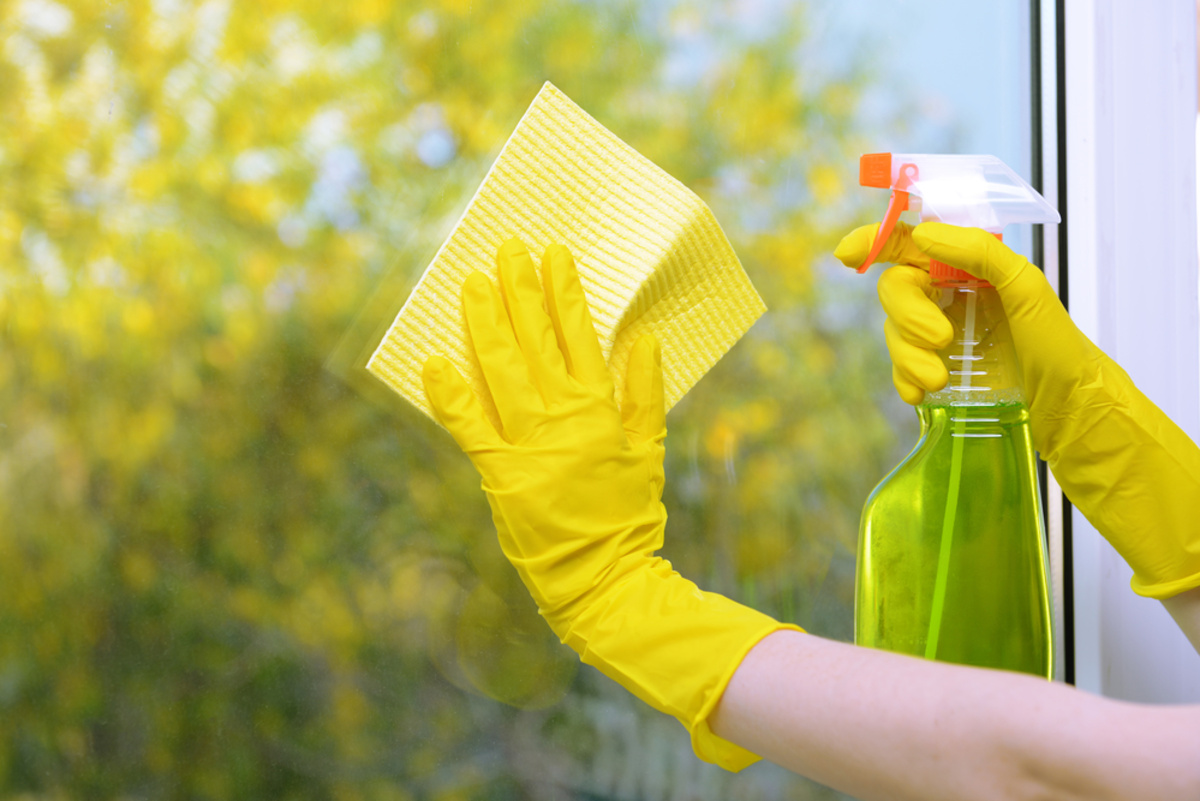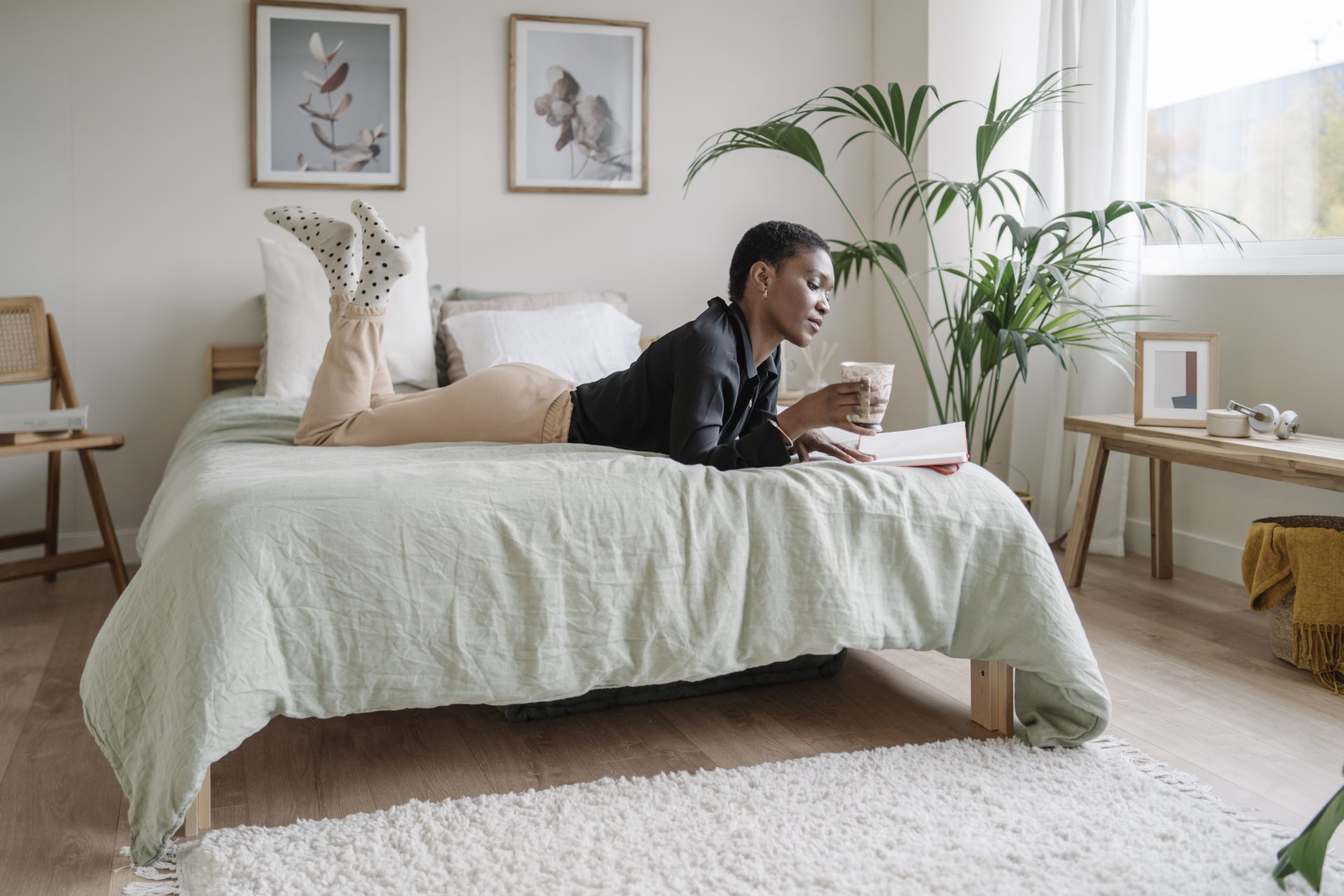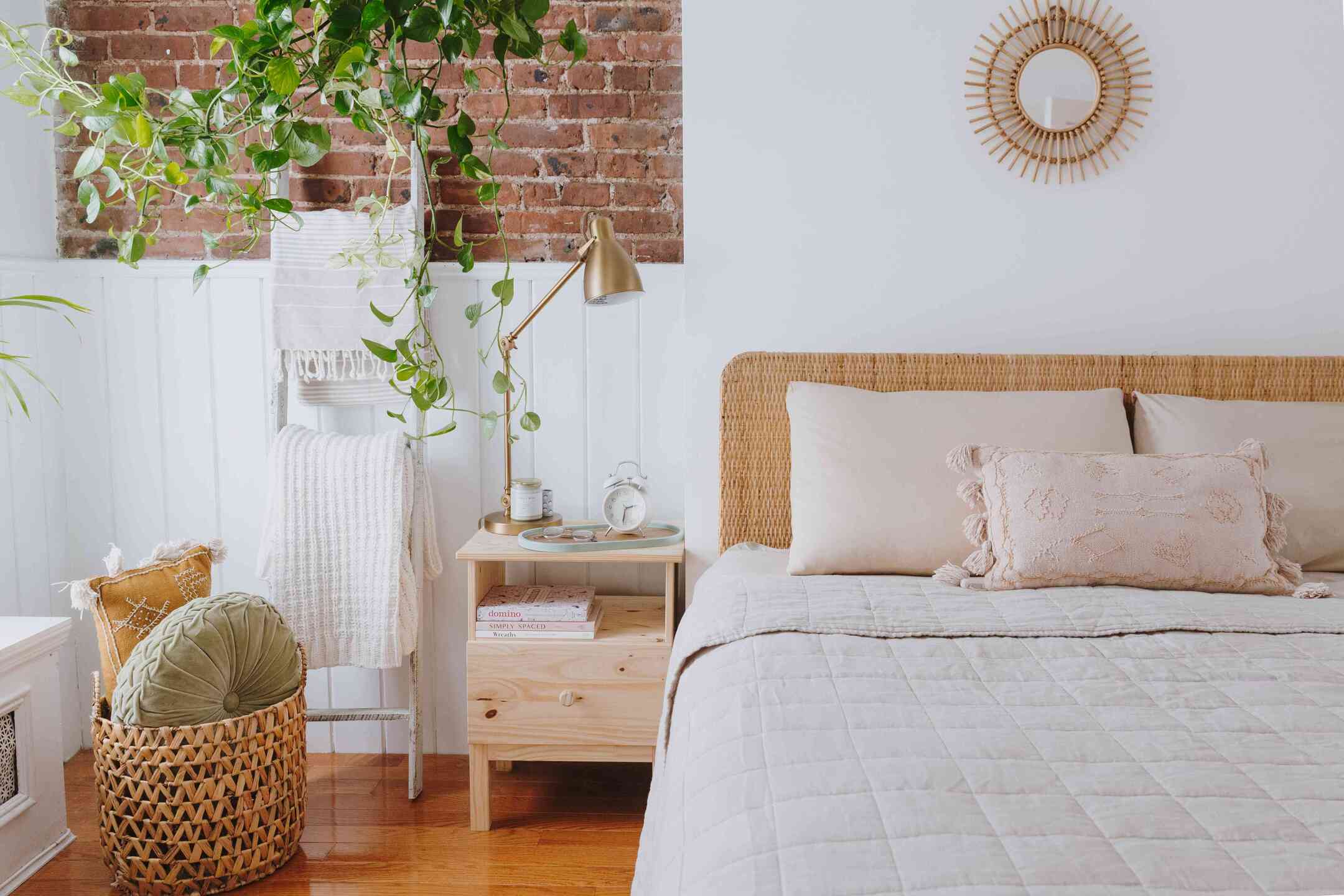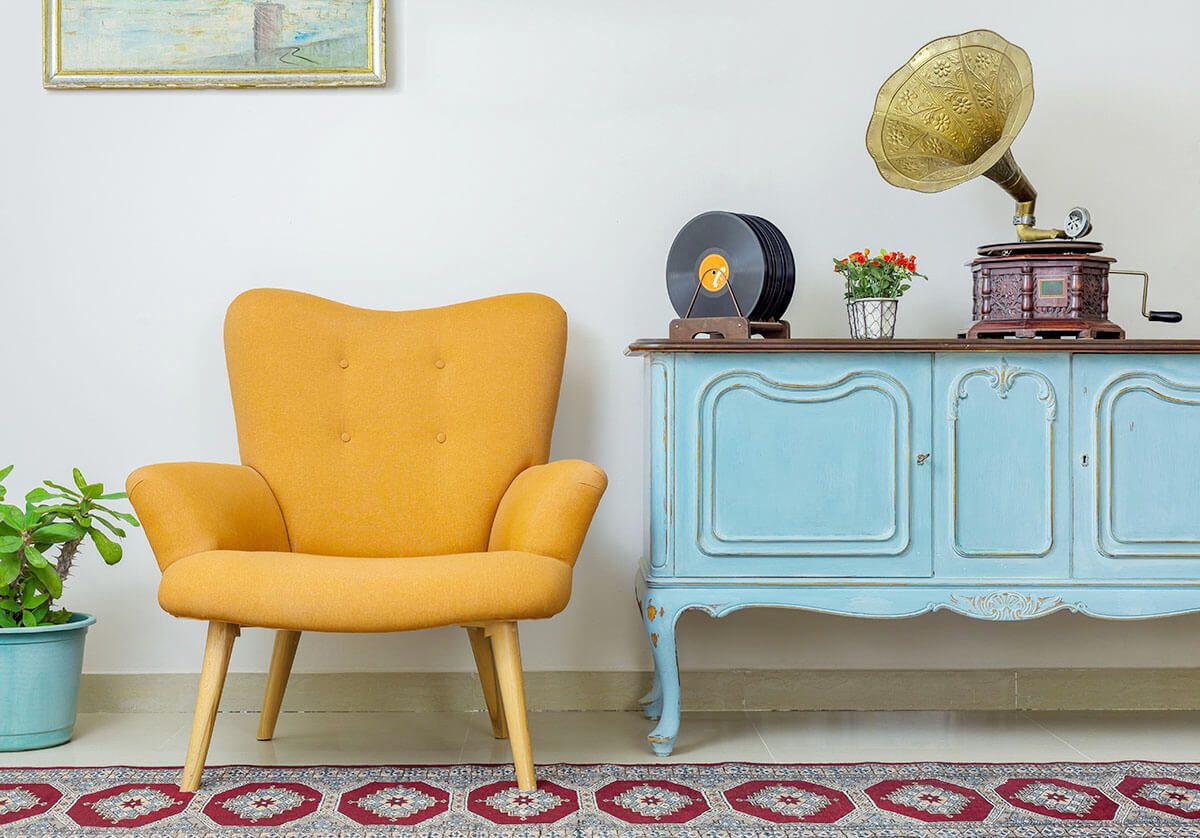Home>Storage Ideas>Living Room Storage>10 Simple Ways To Reduce Allergens In Your Home


Living Room Storage
10 Simple Ways To Reduce Allergens In Your Home
Modified: October 20, 2024
Discover 10 simple ways to reduce allergens in your home, including optimizing living room storage. Improve indoor air quality and create a healthier living environment.
(Many of the links in this article redirect to a specific reviewed product. Your purchase of these products through affiliate links helps to generate commission for Storables.com, at no extra cost. Learn more)
Introduction
When it comes to creating a comfortable and healthy living environment, it’s important to address allergens in your home. Allergens can trigger a range of respiratory issues, including allergies and asthma, making it crucial to take proactive steps to reduce their presence. Fortunately, there are simple and effective ways to minimize allergens in your living space, improving the air quality and promoting your overall well-being.
In this article, we will explore 10 easy-to-implement strategies that can help you reduce allergens in your home. By following these tips, you can create a cleaner and healthier living environment for yourself and your family.
Let’s dive in!
Key Takeaways:
- Keep your home clean, vacuum regularly, and control humidity to reduce allergens. Use hypoallergenic bedding, install HEPA filters, and minimize clutter for a healthier, allergy-friendly living environment.
- Create an allergy-friendly space by removing carpeting, keeping pets out of bedrooms, and washing bedding frequently. Consistency is key to reducing allergens and improving indoor air quality.
Read more: 10 Simple Ways To Reduce Stress At Home
Keep a Clean Home
Keeping a clean home is essential in minimizing the presence of allergens. Dust, pet dander, pollen, and other particles can easily accumulate on surfaces, leading to allergies and respiratory discomfort. Establishing a regular cleaning routine is the first step towards reducing these allergens.
Start by dusting your furniture, shelves, and other surfaces using a damp cloth or a microfiber duster. This helps to trap and remove the dust, preventing it from becoming airborne. Be sure to pay attention to often-neglected areas such as ceiling fans, window sills, and baseboards.
In addition to regular dusting, it’s important to mop hard floors and vacuum carpets to remove any allergens that have settled there. Use a vacuum cleaner equipped with a HEPA (High-Efficiency Particulate Air) filter to ensure that allergens are effectively trapped and not released back into the air.
Don’t forget to regularly clean your curtains, blinds, and upholstery to eliminate dust mites and other allergens. If possible, opt for curtains and blinds that are easy to wash or wipe down regularly.
Take the time to clean your home thoroughly and consistently to maintain a clean and allergen-free living space. This simple step can significantly reduce the presence of allergens and improve the overall air quality in your home.
Vacuum Regularly
Vacuuming regularly is crucial in reducing the accumulation of allergens in your home. Carpets, rugs, and upholstered furniture are notorious for trapping dust, pet dander, pollen, and other allergens. By vacuuming these surfaces at least once a week, you can effectively remove these particles and improve the air quality in your living space.
When choosing a vacuum cleaner, opt for one that is equipped with a HEPA (High-Efficiency Particulate Air) filter. HEPA filters are designed to capture microscopic particles, including allergens, and prevent them from being released back into the air. This ensures that you’re not just moving the allergens around, but actually removing them.
When vacuuming, pay close attention to high-traffic areas, as well as areas where pets spend a lot of time. These areas are more prone to allergen accumulation and require extra attention. Be sure to use attachments and accessories to clean hard-to-reach places such as corners, edges, and tight spaces.
In addition to vacuuming carpets and rugs, don’t forget to vacuum upholstered furniture regularly. Dust and allergens can easily get trapped in the fabric, so using a vacuum cleaner with an appropriate attachment can help to remove them. Consider also using a fabric-safe allergen spray on your furniture for added efficiency.
By incorporating regular vacuuming into your cleaning routine, you can effectively reduce allergens in your home and promote a healthier living environment for you and your family.
Dust and Wipe Down Surfaces
Dusting and wiping down surfaces is an essential step in reducing allergens in your home. Dust particles can contain a variety of allergens, including pollen, pet dander, and dust mites. By regularly dusting and wiping down surfaces, you can effectively remove these allergens and improve the air quality in your living space.
Start by using a microfiber cloth or a damp cloth to dust surfaces such as furniture, shelves, countertops, and electronics. Avoid using feather dusters or dry cloths, as they tend to spread dust particles into the air instead of capturing them. Microfiber cloths, on the other hand, are designed to attract and trap dust particles, ensuring a thorough clean.
When dusting, don’t forget to pay attention to commonly overlooked areas such as ceiling fans, light fixtures, and blinds. These areas can accumulate a significant amount of dust if left unattended. Use an extendable duster or a step ladder to reach high surfaces safely.
In addition to dusting, it’s important to regularly wipe down surfaces with a damp cloth or appropriate cleaning solution. This helps to remove any lingering dust or allergens, ensuring a thorough clean. For surfaces that are frequently touched, such as doorknobs, light switches, and faucets, consider using disinfecting wipes to kill germs and prevent the spread of bacteria.
Remember to also clean and dust your air vents regularly. Dust and allergens can accumulate in the vents, which can then circulate throughout your home when the HVAC system is in use. Use a vacuum attachment or a specialized vent cleaning tool to remove dust and debris from the vents.
By dusting and wiping down surfaces regularly, you can effectively reduce allergens in your home and create a cleaner and healthier living environment for you and your family.
Wash Bedding Frequently
Washing your bedding frequently is crucial in reducing allergens in your home, particularly in the bedroom where you spend a significant amount of time. Bedding can harbor dust mites, pollen, pet dander, and sweat, all of which can trigger allergies and respiratory issues. By keeping your bedding clean, you can create a healthier sleeping environment.
Start by washing your sheets, pillowcases, and blankets in hot water at least once a week. Hot water helps to kill and remove any dust mites or allergens clinging to the fabric. Use a gentle, hypoallergenic detergent to avoid any potential skin irritation or allergic reactions.
In addition to washing your bedding, it’s important to also clean your pillows and mattress. Pillows should be washed every three to six months, depending on the type. Check the manufacturer’s instructions for the proper cleaning method. Some pillows can be machine-washed, while others may require spot cleaning or professional dry cleaning.
When it comes to your mattress, consider using a mattress protector that is hypoallergenic and waterproof. This helps to create a barrier against allergens, preventing them from penetrating the mattress. Vacuum your mattress regularly to remove any dust or allergens that may have settled on the surface.
Don’t forget about your duvets, comforters, and mattress pads. These items should be washed at least every three to four months, or more frequently if you have allergies or pets. Follow the care instructions on the labels to ensure proper cleaning and maintenance.
By washing your bedding frequently, you can eliminate allergens, dust mites, and other irritants that can affect your sleep quality and overall well-being. Enjoy the comfort of clean and fresh bedding for a better night’s sleep!
Remove Carpeting and Rugs
Removing carpeting and rugs from your home can have a significant impact on reducing allergens. Carpets and rugs are notorious for trapping dust, pet dander, pollen, and other allergens deep within their fibers. Even with regular vacuuming, it can be challenging to completely eliminate these allergens.
If possible, consider replacing carpets with hard flooring options such as hardwood, laminate, or tile. These types of flooring are much easier to clean and don’t provide a favorable environment for allergen accumulation. Hard flooring can be swept, mopped, or steam cleaned to effectively remove dust and allergens.
If you prefer having rugs for comfort or aesthetics, opt for washable rugs made of hypoallergenic materials. Washable rugs can be easily cleaned in a washing machine or taken to a professional cleaner to ensure a thorough removal of allergens.
When selecting rugs, choose those with a low pile or short fibers, as they tend to trap fewer allergens compared to high-pile rugs. Additionally, consider using rug pads to secure them in place and prevent debris from getting trapped underneath, making it easier to keep your floors clean.
By removing carpeting and opting for hard flooring with washable rugs, you can significantly reduce the presence of allergens in your home. This not only improves the air quality but also makes it easier to maintain a clean and allergy-friendly living environment.
Consider using allergen-proof covers for your pillows, mattresses, and box springs to reduce exposure to dust mites and other allergens while you sleep.
Control Humidity Levels
Controlling the humidity levels in your home is essential in reducing the growth of mold, mildew, and dust mites, which are common allergens. Maintaining optimal humidity levels not only helps to minimize allergens but also promotes overall comfort and prevents damage to your home.
Keep in mind that the ideal humidity range is between 30% and 50%. Use a hygrometer, a device that measures humidity, to monitor the humidity levels in your home. If the humidity levels consistently exceed 50%, consider using a dehumidifier to remove excess moisture from the air.
In areas with high humidity, such as bathrooms and kitchens, make sure to use exhaust fans or open windows to ventilate the space and prevent excessive moisture buildup. This will help to reduce the growth of mold and mildew, which thrive in damp environments.
On the other hand, if the air in your home is too dry, particularly during winter months when heating systems are in use, consider using a humidifier to add moisture back into the air. Dry air can lead to dry skin, irritated nasal passages, and increased allergen sensitivity. However, it’s important to maintain the humidity levels within the recommended range, as excessive moisture can promote the growth of mold and dust mites.
In addition to controlling humidity levels, make sure to address any leaks or water damage in your home promptly. Moisture from leaks can contribute to mold growth, which can trigger allergies and respiratory issues. Fix any leaks, repair damaged pipes, and address water intrusion issues to maintain a dry indoor environment.
By controlling the humidity levels in your home, you can effectively reduce the growth of allergens such as mold and dust mites, creating a healthier living environment for you and your family.
Use Hypoallergenic Bedding and Furnishings
Choosing hypoallergenic bedding and furnishings can make a significant difference in reducing allergens in your home and promoting better indoor air quality. Hypoallergenic materials are designed to resist dust mites, pet dander, pollen, and other common allergens, making them an excellent choice for allergy sufferers.
When it comes to bedding, opt for mattresses, pillows, and mattress protectors that are specifically labeled as hypoallergenic. These products are typically made with materials that are resistant to dust mites and mold growth, such as latex or memory foam. Avoid down-filled bedding, as down feathers can harbor dust mites and cause allergies for some individuals.
Look for hypoallergenic pillow covers and mattress protectors that provide an additional barrier against allergens. These covers are designed to zip around your pillows and mattresses, preventing dust mites and other allergens from penetrating the fabric.
When choosing furnishings, consider upholstery and curtains made from hypoallergenic fabrics, such as microfiber or leather. These materials are less likely to attract and retain allergens compared to fabrics like wool or velvet.
In addition to hypoallergenic bedding and furnishings, make sure to regularly clean and maintain them as recommended by the manufacturer. Follow the care instructions to keep them in optimal condition and remove any allergens that may have accumulated over time.
By investing in hypoallergenic bedding and furnishings, you can significantly reduce the presence of allergens in your home and create a more allergy-friendly environment. These products provide an extra layer of protection against dust mites, pet dander, and pollen, helping you breathe easier and enjoy a better quality of life.
Keep Pets Out of Bedrooms
As much as we love our furry companions, keeping pets out of the bedrooms can have a significant impact on reducing allergens in your home. Pet dander, urine, and saliva are common allergens that can trigger allergies and asthma symptoms in sensitive individuals.
Pet dander, which consists of tiny flecks of skin shed by animals, is a potent allergen that can easily become airborne and settle on surfaces, including bedding and pillows. By keeping pets out of the bedrooms, you can create a designated allergen-free zone where you can retreat for a good night’s sleep without being exposed to pet allergens.
If you already have a pet that regularly spends time in your bedroom, it may take some adjustment to get them used to staying out. Establish clear boundaries by designating certain areas of your home as pet-friendly while keeping the bedrooms off-limits.
In addition to keeping pets out of bedrooms, it’s important to regularly groom and bathe your pets to reduce the amount of dander they shed. Brushing your pets regularly can help remove loose fur and dander, reducing the amount that is circulated throughout your home.
Washing your pet’s bedding regularly is also essential in minimizing allergens. Use hot water and a hypoallergenic detergent to remove allergens effectively. Be sure to dry the bedding thoroughly, as dampness can promote mold growth.
By keeping pets out of bedrooms and implementing regular pet grooming and cleaning practices, you can significantly reduce the presence of allergens in your home. This allows allergy sufferers to enjoy a more comfortable living environment and a better night’s sleep.
Install HEPA Filters
Installing HEPA (High-Efficiency Particulate Air) filters in your home is an effective way to reduce allergens and improve indoor air quality. HEPA filters are designed to capture microscopic particles such as dust, pollen, pet dander, and mold spores, preventing them from circulating in the air.
HEPA filters are especially beneficial for individuals with allergies or asthma, as they can significantly reduce the presence of airborne allergens that can trigger respiratory symptoms. These filters are commonly used in air purifiers, vacuum cleaners, and HVAC systems.
An air purifier with a HEPA filter can be particularly helpful in reducing allergens in your living space. Place the air purifier in rooms where you spend the most time, such as the bedroom or living room, to effectively filter the air and remove allergens. Make sure to choose an air purifier that is appropriately sized for the room.
When it comes to vacuum cleaners, look for models that are equipped with a HEPA filter. These vacuum cleaners are specifically designed to trap allergens, ensuring that they are not released back into the air during the cleaning process. Regularly vacuuming your home with a HEPA-filtered vacuum can help to remove allergens from carpets, rugs, and upholstered furniture.
If you have a central heating, ventilation, and air conditioning (HVAC) system, consider installing HEPA filters in the system. These filters can capture allergens and prevent them from being recirculated throughout your home. Consult with a professional HVAC technician to ensure that you choose the appropriate type and size of HEPA filter for your system.
Remember, regular maintenance of HEPA filters is crucial in maintaining their effectiveness. Follow the manufacturer’s recommendations for filter replacement or cleaning to ensure optimal performance.
By installing HEPA filters in your home, you can significantly reduce the presence of allergens in the air, promoting cleaner and healthier indoor air quality. Breathe easier and enjoy a more comfortable living environment with the help of HEPA filters.
Minimize Clutter
Keeping your home free of clutter is not only visually appealing but also plays a vital role in reducing allergens in your living space. Clutter provides a breeding ground for dust, molds, and other allergens, making it harder to maintain a clean and allergy-friendly environment.
Start by decluttering and organizing your living areas. Remove unnecessary items that collect dust and create hiding places for allergens. This includes old newspapers, magazines, piles of clothes, and any other objects that are not essential to your daily life. Consider donating or selling items that you no longer need or use.
Regularly dust and clean surfaces to remove any remaining dust or allergens that may have accumulated. Pay extra attention to shelves, countertops, and other areas where clutter tends to accumulate. Use storage solutions such as bins, baskets, and shelves to keep items organized and off the floor.
Clutter can also make it harder to clean your home effectively. Dusting and vacuuming becomes more challenging when there are numerous items obstructing the surfaces. By minimizing clutter, you can easily access and clean all areas of your home, ensuring that allergens are not trapped in hidden corners and crevices.
In addition to reducing the presence of allergens, minimizing clutter can also have a positive impact on your mental well-being. A clean and organized living space promotes a sense of calm and relaxation, allowing you to truly enjoy your home environment.
Take the time to declutter and organize your living areas on a regular basis. By doing so, you can maintain a clean and allergy-friendly home, reducing the presence of dust, mold, and other allergens, and creating a more comfortable and visually pleasing living environment.
Conclusion
Reducing allergens in your home is essential for creating a comfortable and healthy living environment. By implementing these 10 simple strategies, you can effectively minimize the presence of allergens and improve indoor air quality.
Keeping a clean home, vacuuming regularly, dusting and wiping down surfaces, washing bedding frequently, and removing carpeting and rugs are crucial steps in reducing allergens. Controlling humidity levels, using hypoallergenic bedding and furnishings, keeping pets out of bedrooms, and installing HEPA filters further enhance the effort to create an allergy-friendly space.
It’s important to remember that consistency is key. Incorporating these strategies into your regular cleaning and maintenance routines will have a long-lasting impact on reducing allergens in your home.
Creating a clean and allergy-friendly environment not only promotes better respiratory health but also enhances your overall well-being. You’ll enjoy fewer allergy symptoms, better sleep quality, and a more visually appealing and organized living space.
Start implementing these simple yet effective strategies today, and take comfort in knowing that you’re taking active steps to improve the air quality and reduce allergens in your home. Breathe easier, live healthier, and enjoy the benefits of an allergy-friendly living environment!
Frequently Asked Questions about 10 Simple Ways To Reduce Allergens In Your Home
Was this page helpful?
At Storables.com, we guarantee accurate and reliable information. Our content, validated by Expert Board Contributors, is crafted following stringent Editorial Policies. We're committed to providing you with well-researched, expert-backed insights for all your informational needs.














0 thoughts on “10 Simple Ways To Reduce Allergens In Your Home”